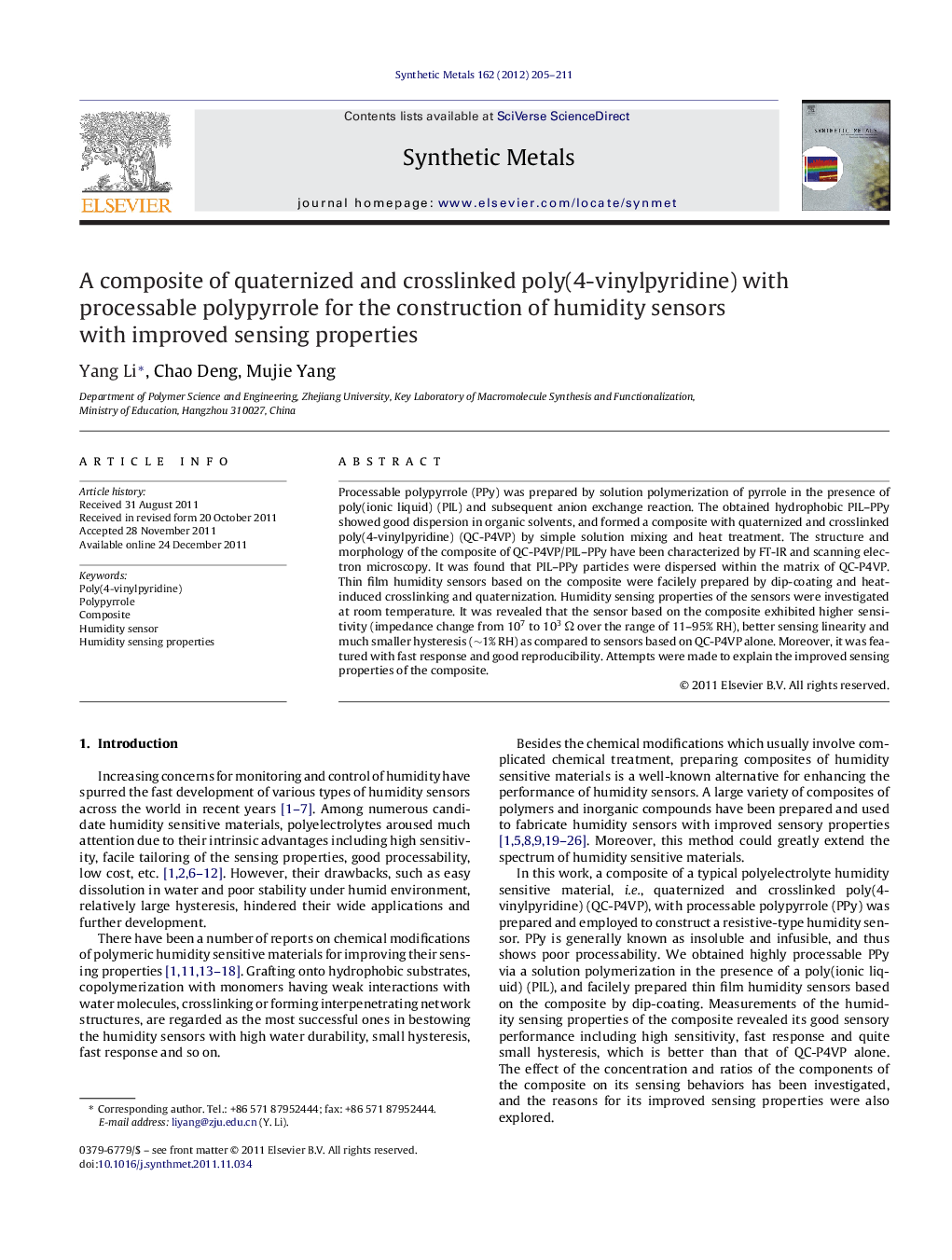| Article ID | Journal | Published Year | Pages | File Type |
|---|---|---|---|---|
| 1442171 | Synthetic Metals | 2012 | 7 Pages |
Processable polypyrrole (PPy) was prepared by solution polymerization of pyrrole in the presence of poly(ionic liquid) (PIL) and subsequent anion exchange reaction. The obtained hydrophobic PIL–PPy showed good dispersion in organic solvents, and formed a composite with quaternized and crosslinked poly(4-vinylpyridine) (QC-P4VP) by simple solution mixing and heat treatment. The structure and morphology of the composite of QC-P4VP/PIL–PPy have been characterized by FT-IR and scanning electron microscopy. It was found that PIL–PPy particles were dispersed within the matrix of QC-P4VP. Thin film humidity sensors based on the composite were facilely prepared by dip-coating and heat-induced crosslinking and quaternization. Humidity sensing properties of the sensors were investigated at room temperature. It was revealed that the sensor based on the composite exhibited higher sensitivity (impedance change from 107 to 103 Ω over the range of 11–95% RH), better sensing linearity and much smaller hysteresis (∼1% RH) as compared to sensors based on QC-P4VP alone. Moreover, it was featured with fast response and good reproducibility. Attempts were made to explain the improved sensing properties of the composite.
► Processable polypyrrole forms a composite with a crosslinked polyelectrolyte. ► Composite is used to facilely prepare humidity sensors. ► Composite exhibits high sensitivity, fast response and very small hysteresis. ► Composite shows better humidity sensory properties than separate component.
